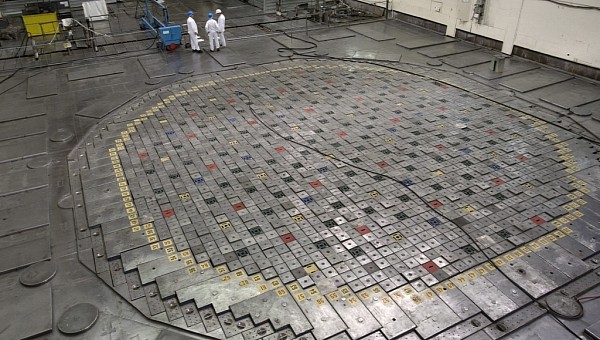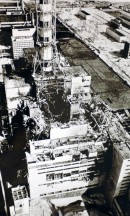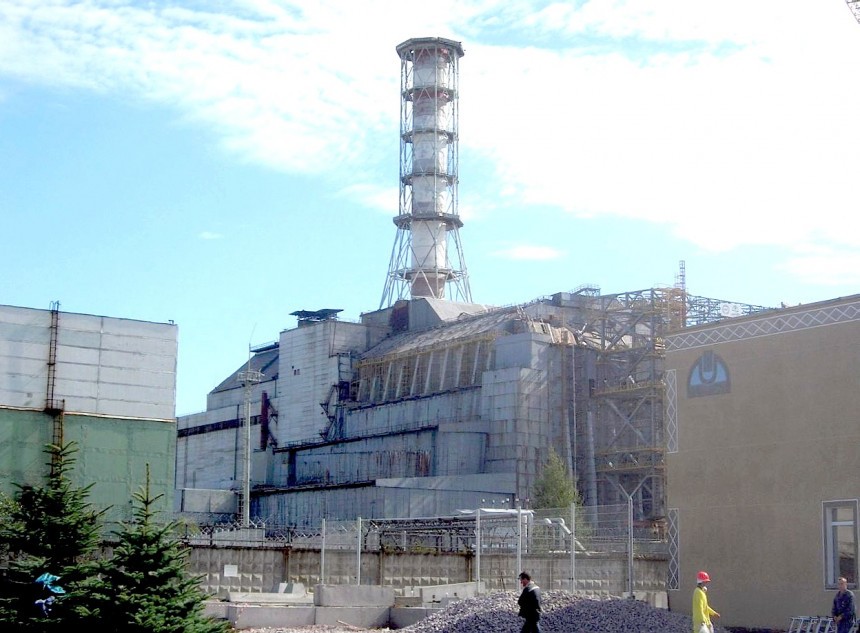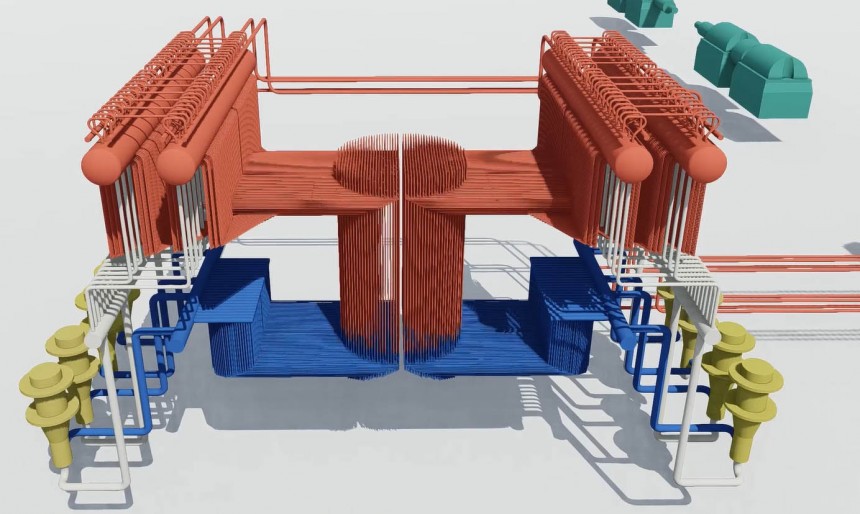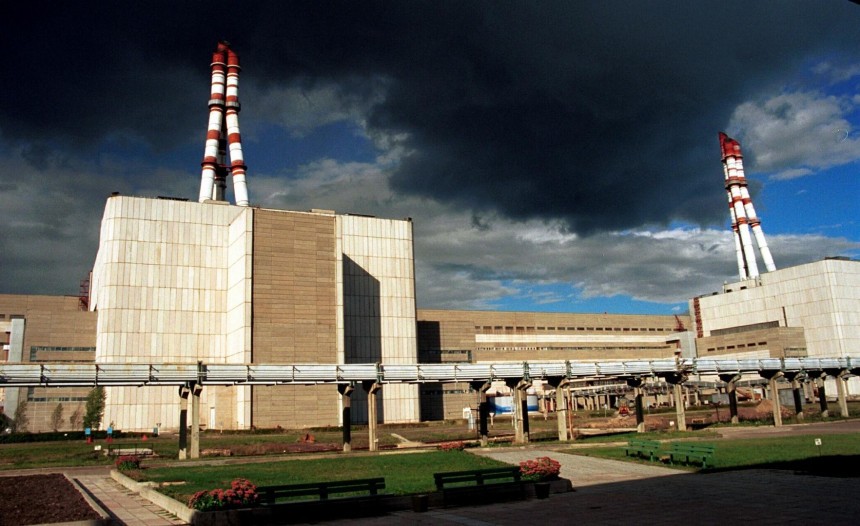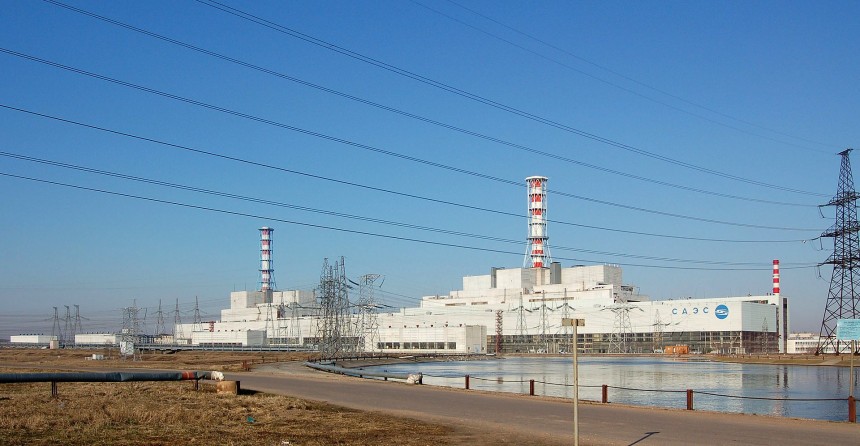There's more bad mojo wrapped around the RBMK class nuclear reactor responsible for the Chorbobyl (Chernobyl) disaster than nearly any other machine in the world. Images of meltdowns, explosions, radiation sickness, and general nightmare fuel permeate modern culture as a result of what took place in Ukraine in 1986. But if you thought RBMKs were a thing of the past, you're sadly mistaken.
Even almost 40 years after the most devastating nuclear accident in human history, the reaktor bolshoy moshchnosti kanalnyy (RBMK) class reactor isn't a relic of the distant past. As of 2023, eight are still in operation. But why? What possible use could the modern world have for a nuclear reactor we've been conditioned to believe is the work of Hades?
To understand why people have this line of thinking, we need to understand what kind of machine we're dealing with and what made it so deadly in the wrong hands. We're all more or less familiar with how fission works. Atoms split apart and send freed subatomic particles flying that impact other atoms and cause those to fission as well. At least, that's without getting into the nitty-gritty.
Engineers need to do some housekeeping to ensure this fission reaction doesn't spiral into an uncontrollable chain reaction. Using what's known as moderator material, engineers can use compounds such as graphite to deliberately impede the flow of free neutrons flung from fission processes in action. Further cooling is often supplied by running liquid coolant through nuclear fuel assemblies. Most of the time, this coolant is either old-fashioned water or, if you're lucky, heavy water made from deuterium atoms instead.
As one of the best liquid state moderator/cooling materials known to science, global facilities pay top dollar to integrate heavy water cooling into their reactor designs. But not the RBMK. Designed to have some of the lowest operating costs among fission reactor types, RBMKs were designed to operate on not-all-that-nice-of-quality fissile fuel. Industry-standard uranium-235 is most commonly used to fuel RBMK reactors, as was the case at Chornobyl.
Even so, the level of enrichment these reactors can work with is far lower than, for instance, the Canadian CANDU-class reactor. Coincidentally, CANDUs have a far better public reputation than the RBMK and are employed worldwide. RBMKs work with uranium with as little as one or two percent enrichment compared to up to four percent in western nuclear reactors.
Adding to the joys of Soviet accountants, RBMK reactors were designed to operate without the benefit of heavy water. This meant that during the safety test of Chornobyl's No.4 reactor, the fissile fuel core in a dangerous super-critical state came into contact with normal water. To make matters worse, the boron carbide control rods were in the fully-raised position. The resulting super-heated steam raised pressures beyond what the core's infrastructure could handle.
This reaction became so hot that it elementally separated the water. The resulting hydrogen and oxygen aided in blowing the reactor lid clean off. A sequence of two powerful back-of-back explosions caused the moderating graphite material meant to stabilize the reaction to turn molten. The resulting radioactive lava infiltrated meters of concrete before settling in the basement room of the reactor facility on top of several other nasty side effects.
Of course, this is a gross oversimplification of what happened on that fateful day in April 1986. We haven't even touched on the RBMK 1000's insanely high positive void coefficient. Essentially the increased presence of free neutrons in voids of steam bubbles heated by nuclear fuel, rods which can easily spiral into super-criticality. In essence, the less water present in the core, the more likelihood of things going kaboom.
Efforts to cheapen operations with lesser-refined uranium and a lack of heavy water combined with gross overconfidence from plant management in the RBMK 1000-series design to create the right conditions for catastrophe. Investigations after the accident proved the reactor didn't even have enough control rods to ameliorate a super-critical fission core on the verge of a meltdown.
Many in the western world were first exposed to RBMK fission reactors not by the Chornobyl disaster itself but by the hit HBO drama series Chernobyl from 2019. But the admittedly captivating five-episode miniseries didn't explain a great many things that took place well after the disaster. For one thing, only the fourth reactor at the plant was affected by the horrific Chornobyl disaster.
Reactors one through three continued operation well into the late 90s. Only in the year 2000 was the final remaining RBMK deactivated in preparation for decontamination. But beyond Chornobyl, the RBMK reactor continued development. The upgraded RBMK 1500-series reactor was already operational even before the Chornobyl accident and continued to proliferate across Eastern Europe.
The first RBMK constructed outside the Soviet Union was at the Ignalia Nuclear Power Plant in Lithuania. At its peak performance, the Ignalia Nuclear Plant supplied a quarter of Lithuania's energy generation capacity. Though decommissioned in 2009, Ignalia's RBMK reactors ensured Lithuania's entry into the atomic era.
Only a handful of reactors in the entire world supply anywhere near that percent of its national energy GDP. Back in Russia, the Kursk Nuclear Power Plant's employed RBMK-1000s are much the same as the ones at Chornobyl since 1977. Though the first shut down in 2021, the remaining reactors, two through four, will continue to operate until at least 2030. Two further RBMK facilities exist in Russia. One in the region of Smolensk and one in Leningrad. Between both nuclear plants, the last RBMK 1000 series won't go offline until 2034 at the earliest.
It's understandable to be horrified knowing eight potential Chornobyl disasters are still alive and well in 2023. But before you despair, consider this. Between 1986 and 2023, there have been exactly zero super-critical fission accidents at any of the RBMKs in operation after the fateful accident in Ukraine. Only when the understanding of key forces of this brand of fission was fully understood did the safety record of the RBMK reactor start to smooth out.
Contingency plans for critical events, like high xenon concentration when the reactor's water pumps are inactive, were implemented in the aftermath of the Chornobyl disaster. As were the introduction of fissile control rods that can be rapidly introduced to the core in the event of Chornobyl-like conditions in the RBMK 1500-series reactor. In this case, the ending number relates to the nominal capacity at which the reactor can generate power in megawatts. This improved variant also features a bespoke 'Emergency Core Cooling System' (ECCS), which continuously pumps cooling water through the reactor core even during safety tests where the main water pumps are inactive.
But perhaps most importantly, that little devil of a high positive void coefficient was reduced to more controllable levels. It all adds up to a safety record post-1986 that's the complete opposite of its global reputation. As the HBO miniseries is eager to point out, there was also a fair level of managerial oversights the night of the accident. The show's portrayal of the plant's deputy chief engineer Anatoly Dyatlov as an almost comically evil and sadistic man, with no regard for the safety of his workers, was certainly played up for the sake of a good story. Still, his team's negligence on the night of the Chornobyl disaster can't be understated.
It almost makes one wonder how history would have looked on RBMK reactors very differently had the events of that evening gone even a little bit differently. Would the world at large even be aware of an otherwise unassuming little city among the forests of Ukraine? Would the Soviet Union have even collapsed at all without such a brazen disaster sewing doubt in the minds of the public? One can only imagine how the world would be different today.
For now, RBMK reactors still have a little bit longer before they're all deactivated and relegated to the pages of history. It's hard to argue turning an inherently flawed and dangerous reactor design into something that hasn't gone wrong for almost four decades didn't contribute to the understanding of how to handle reactors gone wrong.
In the end, nuclear energy's killed far fewer people over the years than petrochemicals. That's in spite of the scale of the destruction seen at Chornobyl. We end with the fitting quip "everybody's a gangster until the 350 kg control rods start dancing."
To understand why people have this line of thinking, we need to understand what kind of machine we're dealing with and what made it so deadly in the wrong hands. We're all more or less familiar with how fission works. Atoms split apart and send freed subatomic particles flying that impact other atoms and cause those to fission as well. At least, that's without getting into the nitty-gritty.
Engineers need to do some housekeeping to ensure this fission reaction doesn't spiral into an uncontrollable chain reaction. Using what's known as moderator material, engineers can use compounds such as graphite to deliberately impede the flow of free neutrons flung from fission processes in action. Further cooling is often supplied by running liquid coolant through nuclear fuel assemblies. Most of the time, this coolant is either old-fashioned water or, if you're lucky, heavy water made from deuterium atoms instead.
As one of the best liquid state moderator/cooling materials known to science, global facilities pay top dollar to integrate heavy water cooling into their reactor designs. But not the RBMK. Designed to have some of the lowest operating costs among fission reactor types, RBMKs were designed to operate on not-all-that-nice-of-quality fissile fuel. Industry-standard uranium-235 is most commonly used to fuel RBMK reactors, as was the case at Chornobyl.
Adding to the joys of Soviet accountants, RBMK reactors were designed to operate without the benefit of heavy water. This meant that during the safety test of Chornobyl's No.4 reactor, the fissile fuel core in a dangerous super-critical state came into contact with normal water. To make matters worse, the boron carbide control rods were in the fully-raised position. The resulting super-heated steam raised pressures beyond what the core's infrastructure could handle.
This reaction became so hot that it elementally separated the water. The resulting hydrogen and oxygen aided in blowing the reactor lid clean off. A sequence of two powerful back-of-back explosions caused the moderating graphite material meant to stabilize the reaction to turn molten. The resulting radioactive lava infiltrated meters of concrete before settling in the basement room of the reactor facility on top of several other nasty side effects.
Of course, this is a gross oversimplification of what happened on that fateful day in April 1986. We haven't even touched on the RBMK 1000's insanely high positive void coefficient. Essentially the increased presence of free neutrons in voids of steam bubbles heated by nuclear fuel, rods which can easily spiral into super-criticality. In essence, the less water present in the core, the more likelihood of things going kaboom.
Many in the western world were first exposed to RBMK fission reactors not by the Chornobyl disaster itself but by the hit HBO drama series Chernobyl from 2019. But the admittedly captivating five-episode miniseries didn't explain a great many things that took place well after the disaster. For one thing, only the fourth reactor at the plant was affected by the horrific Chornobyl disaster.
Reactors one through three continued operation well into the late 90s. Only in the year 2000 was the final remaining RBMK deactivated in preparation for decontamination. But beyond Chornobyl, the RBMK reactor continued development. The upgraded RBMK 1500-series reactor was already operational even before the Chornobyl accident and continued to proliferate across Eastern Europe.
The first RBMK constructed outside the Soviet Union was at the Ignalia Nuclear Power Plant in Lithuania. At its peak performance, the Ignalia Nuclear Plant supplied a quarter of Lithuania's energy generation capacity. Though decommissioned in 2009, Ignalia's RBMK reactors ensured Lithuania's entry into the atomic era.
It's understandable to be horrified knowing eight potential Chornobyl disasters are still alive and well in 2023. But before you despair, consider this. Between 1986 and 2023, there have been exactly zero super-critical fission accidents at any of the RBMKs in operation after the fateful accident in Ukraine. Only when the understanding of key forces of this brand of fission was fully understood did the safety record of the RBMK reactor start to smooth out.
Contingency plans for critical events, like high xenon concentration when the reactor's water pumps are inactive, were implemented in the aftermath of the Chornobyl disaster. As were the introduction of fissile control rods that can be rapidly introduced to the core in the event of Chornobyl-like conditions in the RBMK 1500-series reactor. In this case, the ending number relates to the nominal capacity at which the reactor can generate power in megawatts. This improved variant also features a bespoke 'Emergency Core Cooling System' (ECCS), which continuously pumps cooling water through the reactor core even during safety tests where the main water pumps are inactive.
But perhaps most importantly, that little devil of a high positive void coefficient was reduced to more controllable levels. It all adds up to a safety record post-1986 that's the complete opposite of its global reputation. As the HBO miniseries is eager to point out, there was also a fair level of managerial oversights the night of the accident. The show's portrayal of the plant's deputy chief engineer Anatoly Dyatlov as an almost comically evil and sadistic man, with no regard for the safety of his workers, was certainly played up for the sake of a good story. Still, his team's negligence on the night of the Chornobyl disaster can't be understated.
For now, RBMK reactors still have a little bit longer before they're all deactivated and relegated to the pages of history. It's hard to argue turning an inherently flawed and dangerous reactor design into something that hasn't gone wrong for almost four decades didn't contribute to the understanding of how to handle reactors gone wrong.
In the end, nuclear energy's killed far fewer people over the years than petrochemicals. That's in spite of the scale of the destruction seen at Chornobyl. We end with the fitting quip "everybody's a gangster until the 350 kg control rods start dancing."
